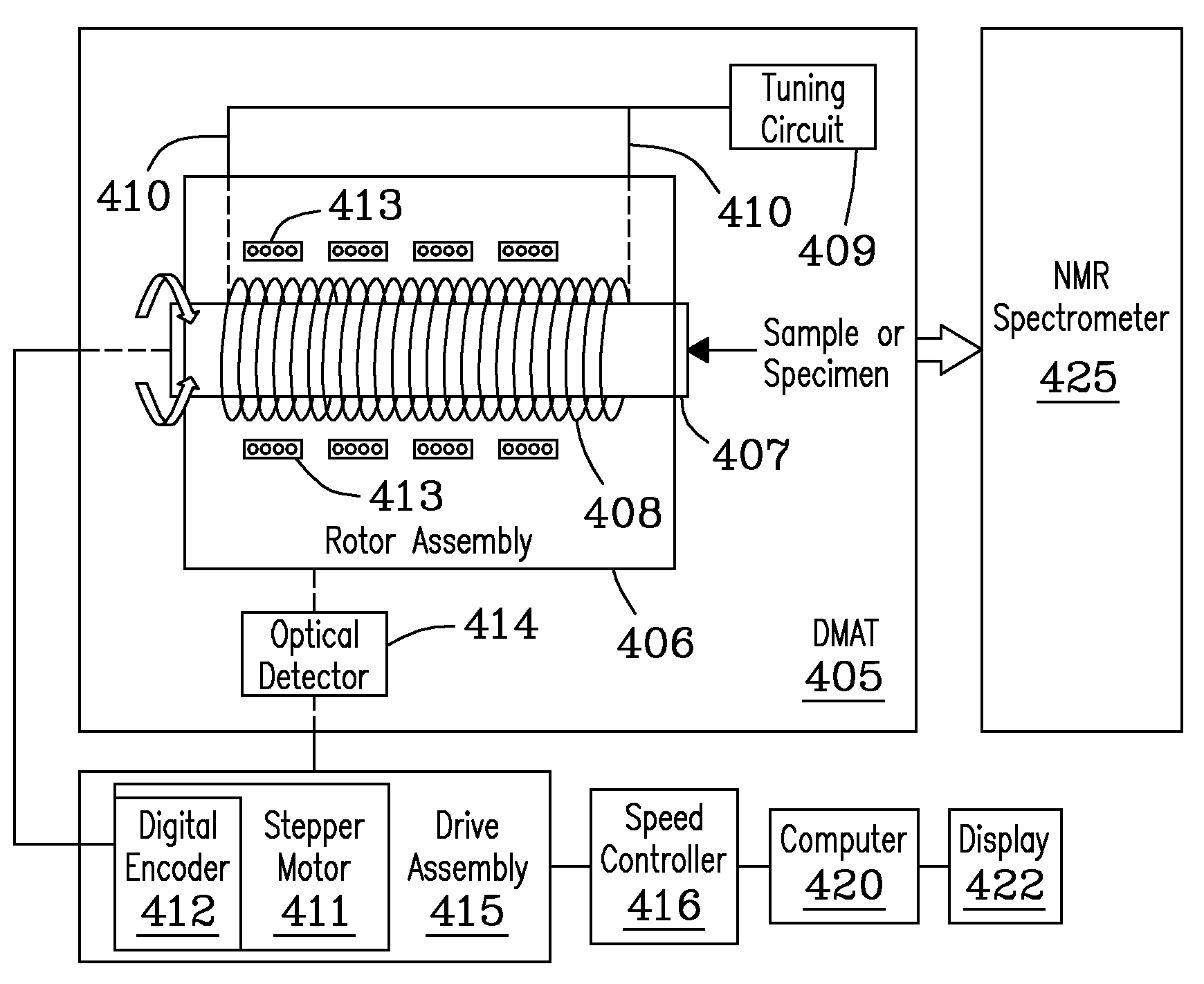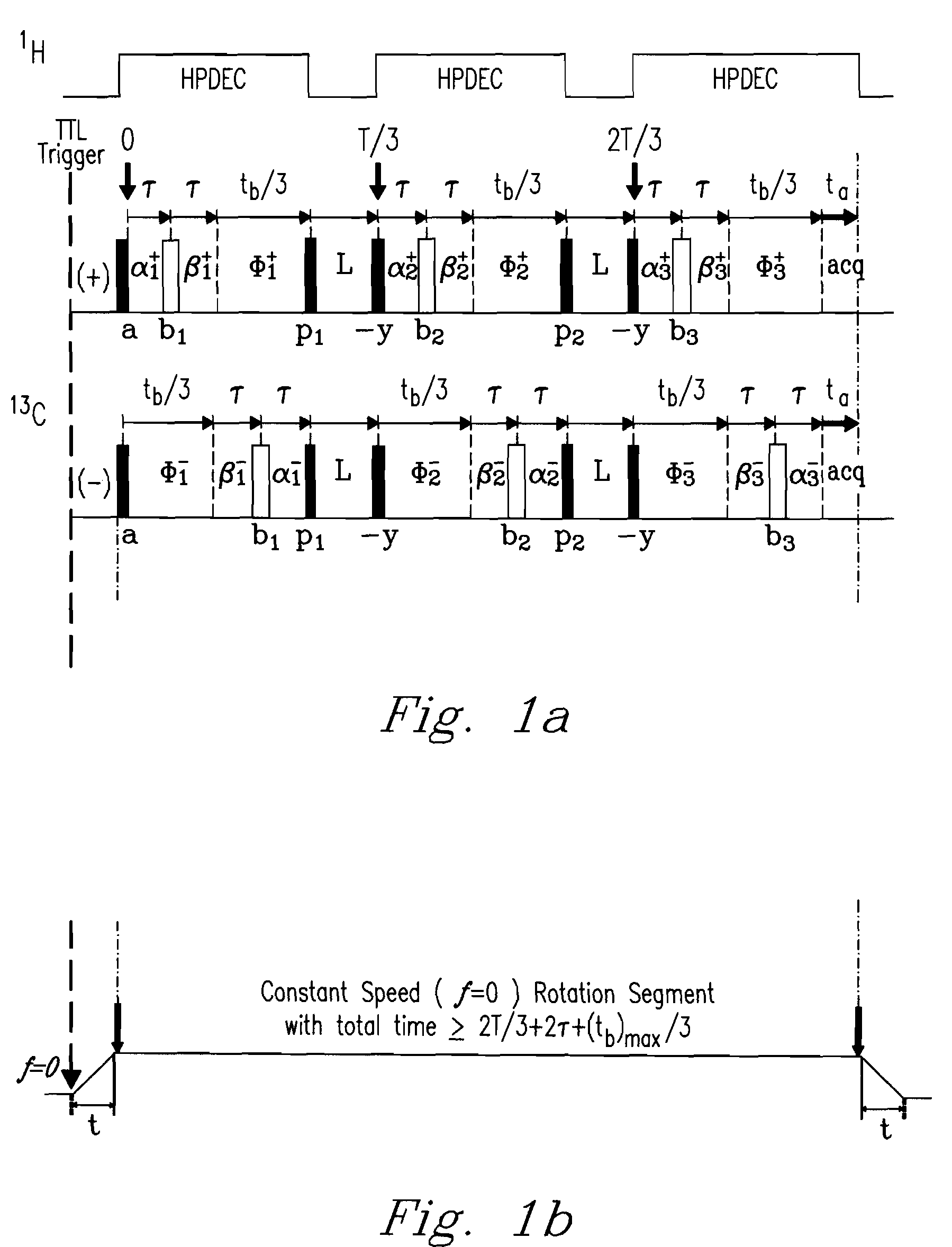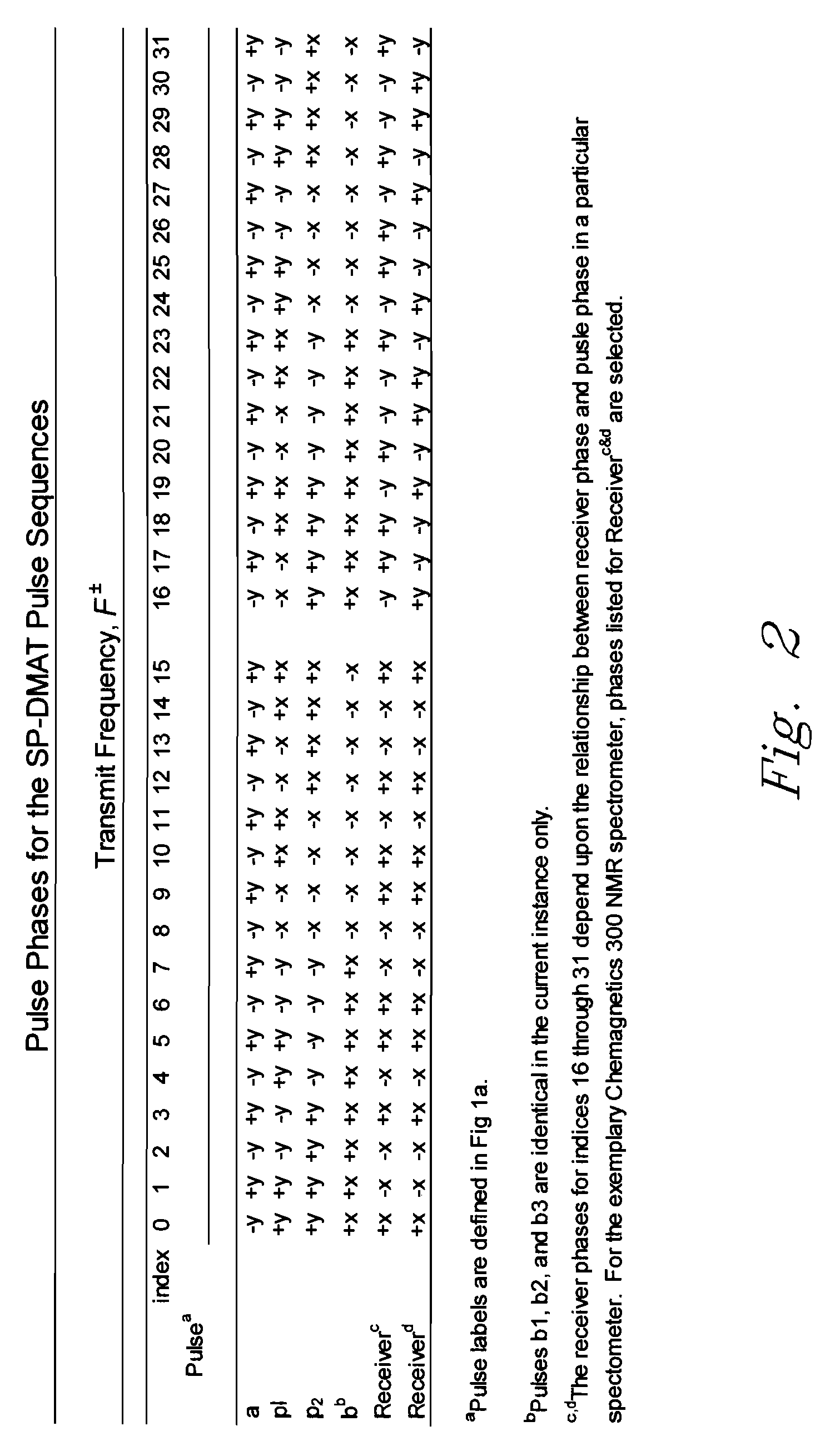Discrete magic angle turning system, apparatus, and process for in situ magnetic resonance spectroscopy and imaging
a magnetic resonance spectroscopy and imaging technology, applied in the field of magnetic resonance spectroscopy and/or imaging, can solve the problems of reducing the accuracy of the spectral resolution and sensitivity of the dmat system, reducing the accuracy of the dmat, etc., and achieves the effect of high resolution
- Summary
- Abstract
- Description
- Claims
- Application Information
AI Technical Summary
Benefits of technology
Problems solved by technology
Method used
Image
Examples
example 1
[0089]Samples of 1,2,3-trimethoxybenzene (1,2,3-TMB) (Aldrich Chemical Co., Milwaukee, Wis., USA) were analyzed with a Chemagnetics 300 MHz Infinity (NMR) spectrometer (Varian, Palo Alto, Calif., USA) in conjunction with a DMAT probe of the invention using CP-MAS pulse sequencing. A high speed magic angle spinning (i.e., MAS) module (FIG. 6b) was mounted to the rotor assembly of the DMAT probe. The magic angle was set, adjusted using KBr. Sample spinning rate was 3.05 kHz, but is not limited. Larmor frequencies of 75.438 MHz and 299.9835 MHz, for 13C and 1H, respectively, were used. FIG. 9a presents a 13C CP-MAS spectrum, obtained using a cross-polarization (CP) time of 2 ms, 8 accumulation numbers, and a recycle delay time of 5 sec. The 90 degree (i.e., π / 2) pulse width for the initial 1H was 6.5 μs. The 1H field strengths were about 38.5 kHz and 30 kHz during the (CP) and high-power (HP) decoupling (HPDEC) periods, respectively. Unlabeled peaks in the figure correspond to spinning...
example 2
[0090]Adamantane, or tricyclo [3.3.1.13,7] (←Jian . . . is the exponent correct?) decane having chemical formula (C10H16), is a common 13C NMR chemical reference standard. Adamantane (Aldrich Chemical Co., Milwaukee, Wis., USA) was analyzed using a Chemagnetics 300 MHz Infinity (NMR) spectrometer (Varian, Palo Alto, Calif., USA) in conjunction with the DMAT probe of the invention using 2D SP-DMAT pulse sequencing, e.g., as described previously with reference to FIG. 1a. Acceleration time (t) was about 110 ms, proceeding from an acceleration value of zero initially to about 2 Hz, the target rotation speed. A first pulse labeled (a) was triggered 4 ms after constant speed was reached, leaving a maximum of [500 ms−2T / 3−114 ms=52.6 ms] for segments of the sequence (i.e., 2τ+tb / 3). At a typical value of, e.g., (τ=100 μs), the maximum value of (tb / 3) is about 52.4 ms, resulting in a maximum evolution time for the evolution dimension of about 157.5 ms. Recycle delay time was 3s. Free-induc...
example 3
[0092]2D-DMAT and CP-DMAT analyses of 1,2,3-TMB were performed using a Chemagnetics 300 MHz Infinity spectrometer in conjunction with a DMAT probe and DMAT pulse sequence described in Example 1. 2-D data were acquired using following parameters. Rotation speed corresponding to the constant speed rotation segment was 2 Hz, i.e. T=500 ms. The acceleration time (t) was about 110 ms, proceeding from an acceleration of zero initially to 2 Hz was about 110 ms. A first pulse (a) was triggered 4 ms after the 2 Hz speed was reached, leaving a maximum of [500 ms−2T / 3−114 ms=52.6 ms] for segments of the sequence, i.e., (2τ+tb / 3). Given a typical value of (τ=100 μs), value of (tb / 3) can be as long as 52.4 ms, resulting in a maximum evolution time of 157.5 ms. Recycle delay time was 5 s. Free-induction decays in the acquisition dimension (t2) contained 128 complex points and were transformed to spectra with a spectral width of 40 kHz. 2-D data were collected using 70 (tb) steps, incremented by 9...
PUM
 Login to View More
Login to View More Abstract
Description
Claims
Application Information
 Login to View More
Login to View More - R&D
- Intellectual Property
- Life Sciences
- Materials
- Tech Scout
- Unparalleled Data Quality
- Higher Quality Content
- 60% Fewer Hallucinations
Browse by: Latest US Patents, China's latest patents, Technical Efficacy Thesaurus, Application Domain, Technology Topic, Popular Technical Reports.
© 2025 PatSnap. All rights reserved.Legal|Privacy policy|Modern Slavery Act Transparency Statement|Sitemap|About US| Contact US: help@patsnap.com



